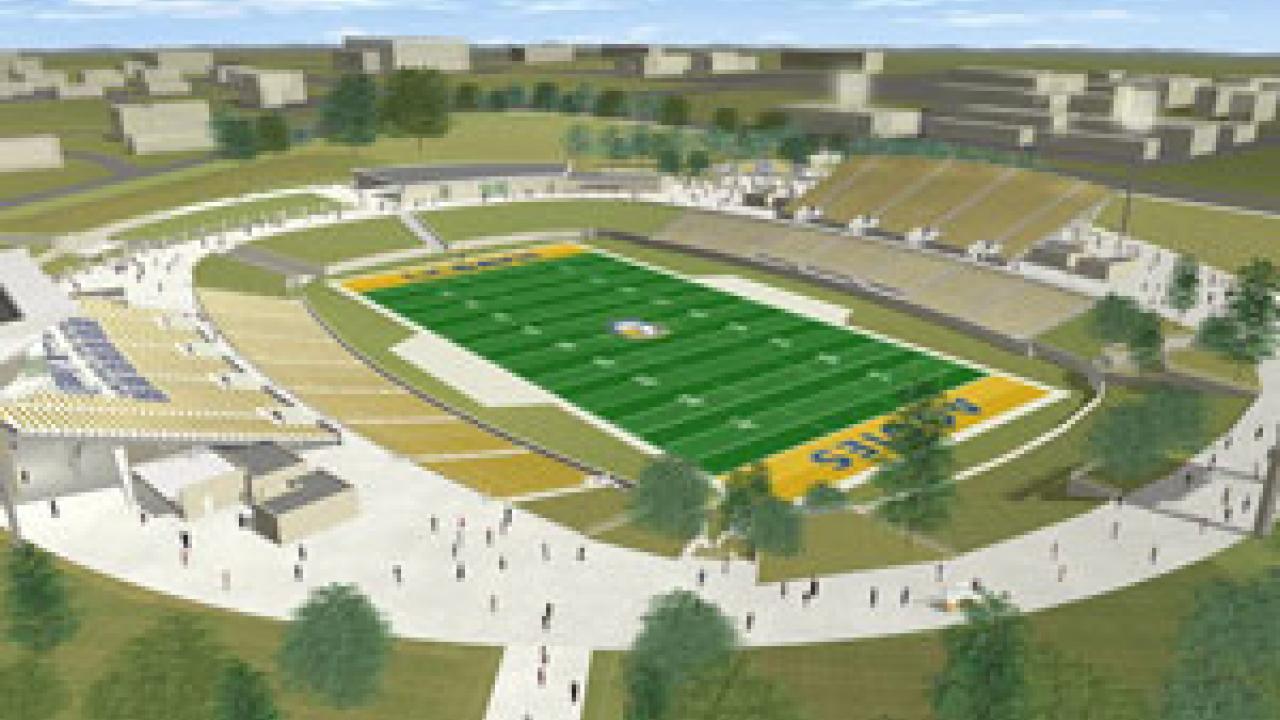The campus's multi-use stadium, one of the projects funded by the 1999 Facilities And Campus Enhancement Initiative, continues in its planning even while approval from the UC Regents has been delayed due to the state's budgetary situation.
The stadium is to be located at the corner of Hutchison Drive and La Rue Road, adjacent to the newly opened Schaal Aquatics Center.
The stadium design and its financial component were scheduled to be considered by the regents in March and April. But those agenda items have been deferred -- along with all capital building projects in the UC system -- until further notice. The regents plan to use their upcoming meetings to instead consider student academic fee issues in depth in light of Gov. Arnold Schwarzenegger's state buget proposals. The delay will likely mean the stadium will not open until early 2006. It was originally slated to open for the 2005 UC Davis football season.
The multi-use stadium will serve as the home field for both the UC Davis football and women's lacrosse programs. It will also provide a venue for community events, such as high school athletic events, concerts and commencement ceremonies. The initial concept design calls for permanent seating for 10,000 to 15,000 spectators -- a figure that will be greatly determined during the construction bidding phase -- with basic amenities such as locker rooms, an open-air club room and an enclosed press box.
"Having a multi-use stadium on campus is exciting for our student-athletes and for intercollegiate athletics," said Greg Warzecka, director of athletics. "The bigger piece is fulfilling the hopes and dreams of those who proposed the F.A.C.E. Initiative and worked so hard to get it passed.
Student-based fees from the F.A.C.E. Initiative account for almost two-thirds of the $29.75 million project cost, with the remaining funds comprising private donations and pledges.
Cynthia Bachman, of the UC Davis Office of Resource Management and Planning, said one thing regents will be seeing when they eventually do review the stadium plans are all the sources of revenue that go to pay back the financing for the stadium. "There has to be a coverage ratio of 1.25 -- we must have revenues that are 1.25 times the amount of dollars financed," Bachman said. "We've done that. In that regard, we think it's in good shape," she said. Regents will also hear a project description and justification, and background on the F.A.C.E. Initiative.
The campus building committee, chaired by Bob Franks, associate vice chancellor of student affairs, has engaged the architectural firm of Ellerbe Becket to consult in the early concept designs and stadium renderings. Ellerbe Becket has served as primary and/or design architect for such sports facilities as Bank One Ballpark in Phoenix, Ariz., the Fleet Center in Boston, Mass., and the Walter A. Haas, Jr. Pavilion on the Berkeley campus.
The full build-out of the stadium features additional permanent seating for as many as 30,000 viewers, expanded team rooms, lighted practice fields and an enclosed club room.
The Athletic Development office launched a capital campaign in July 2001 to procure private funding for both the stadium's initial phase and its full build-out. Naming opportunities are still available for numerous stadium features, including the scoreboard, press box and stadium box seats.
"We believe the multi-use stadium is a facilty that will serve our needs very well," said Franks. "It is functional, but not ostentatious. It's comfortable, but not extravagant. In the judgement of the building committee, it fits very well with Davis campus values."
Other campus projects funded by the 1999 F.A.C.E. Initiative are the Schaal Aquatics Center, which became fully operational in January, and the Activities and Recreation Center, which opens its doors this month and will be available for tours during Picnic Day.
